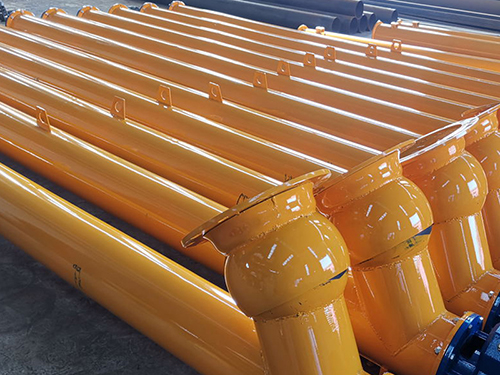SURVIVAL THROUGH QUALITY
PRODUCT CENTER
-
Pulse dust collector
-
Mine dust collector
-
Boiler dust collector
-
Metallurgical dust collector
-
Carbon plant dust collector
-
Chemical dust collector
-
Rubber dust collector
-
Woodworking dust collector
-
Single machine dust collector
-
Static electricity Dust collector
-
Cyclone dust collector
-
Wet dust collector
-
Filter cartridge dust collector
-
Insert valve (gate valve)
-
Ventilation butterfly valve (cold air valve)
-
Spiral conveyor (auger)
-
Scraper conveyor
-
Dust humidifier
-
Bucket elevator
-
Ash discharge valve
-
Material Handling Equipment
-
Wet scrubber
-
Dust collector
-
Dust removal filter bag
-
Dust removal bag cage
-
Polishing platform
-
Waste gas treatment equipment
-
Electric control cabinet
-
Fan
-
Smoke welding machine
-
Liquid level switch
-
Dust removal filter element
-
Aeration cushion
-
Sweeper
-
Dust suppression device
-
Solenoid valve

Spiral conveyor
A screw conveyor is a mechanical device that uses an electric motor to drive a screw to rotate and move materials to achieve conveying purposes. It can transport horizontally, obliquely, or vertically, and has the advantages of simple structure, small cross-sectional area, good sealing, easy operation, easy maintenance, and convenient enclosed transportation. Spiral conveyors are divided into two types in terms of conveying form: axial spiral conveyors and non axial spiral conveyors. In terms of appearance, they are divided into U-shaped spiral conveyors and tubular spiral conveyors. The axial screw conveyor is suitable for non sticky dry powder materials and small particle materials. For example, cement, fly ash, lime, grains, etc., the shaft less screw conveyor is suitable for conveying sticky and easily entangled materials. The working principle of a screw conveyor (such as sludge, biomass, garbage, etc.) is that the rotating screw blades push the material and transport it through the screw conveyor. The force that prevents the material from rotating with the screw conveyor blades is the weight of the material itself and the frictional resistance of the screw conveyor shell to the material. The spiral blades welded on the rotating shaft of the screw conveyor have different surface types according to the conveyed materials, such as solid surface, belt surface, and blade surface. The screw shaft of the screw conveyor has a thrust bearing at the end of the material movement direction to provide axial reaction force to the screw with the material. When the machine length is long, a middle hanging bearing should be added.
When the spiral shaft rotates, due to the gravity of the material and its frictional force with the groove wall, the material can only move forward along the bottom of the conveyor groove under the push of the blades, as if the non rotating nut is translating along the rotating screw. The main forward force of the material comes from the force exerted by the spiral blades when rotating axially, which moves the material upwards and forward along the tangent direction of the blades.
In order to maintain a favorable tension state for the spiral shaft, the driving device and discharge port are generally placed at the same end of the conveyor, while the feed port is placed as close to the tail of the other end as possible. The rotating spiral blades push the material for transportation, and the force that prevents the material from rotating with the spiral conveyor blades is the weight of the material itself and the frictional resistance of the spiral conveyor shell to the material. The surface shape of the blade can be classified into solid surface shape, belt surface shape, blade surface shape, etc. according to the different materials being transported. The screw shaft of the screw conveyor has a thrust bearing at the end of the material movement direction to provide axial reaction force to the screw with the material. When the machine length is long, a middle hanging bearing should be added.

